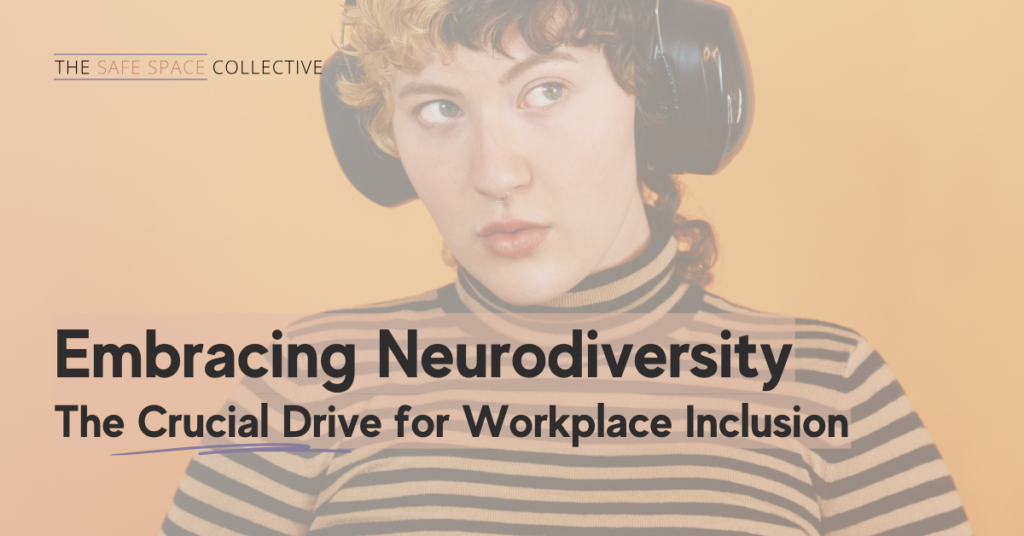Often, working effectively and your ADHD brain can seem at odds with one another. And for neurodivergent people, it might feel as though today’s workplaces have some catching up to do when it comes to offering a supportive work environment.
But did you know you’re able to request reasonable ADHD workplace accommodations in Australia? And that your employer is legally obliged to provide them? Today, we explore what’s possible and chat with neurodivergent advocate April Lea about how to ask for ADHD workplace accommodations and how to manage your ADHD better in the workplace. Let’s begin.
Know your rights: ADHD workplace accommodations you’re entitled to
As a neurodivergent individual, it can be empowering to know that there are ADHD workplace adjustments you can ask for. But what do these look like? Consider how some of these accommodations might help you manage your ADHD in your daily professional life.
- Noise-cancelling headphones. Wearing noise-cancelling headphones at work can help drown out background noise. And many individuals with ADHD find these extremely valuable for staying focused.
- Access to a permanent desk. Hot desks might be standard in modern workplaces, but they can be unproductive for people with ADHD. Ask your manager or HR rep if you can have a permanent desk.
- Variations in starting time. Time agnosia (or time blindness) is a very real thing for people with ADHD. April suggests asking for a time window instead of a hard deadline to help you stay on track. “You could ask for a 15-minute leeway for your start time each day,” she says. “Simply explain to your boss that as an ADHD person, you struggle to measure that version of time.”
- Asking for instructions in writing. Some people find remembering or following instructions easier if written rather than spoken. Have tasks or deadlines you must commit to? Request that they’re put in writing to help you manage them more easily.
It’s important to note that you can make these requests at any time, even during the hiring process. All Australian employers have a duty under the Disability Discrimination Act 1992 (DDA) to make reasonable adjustments for employees with disabilities, including ADHD, unless it imposes an unjustifiable hardship on the employer. And as these adjustments are certainly reasonable, you can feel confident in asking.

How to ask for workplace accommodations for ADHD
Do you know you need something different but are unsure how to ask for an adjustment? We get it. These can feel like fiddly conversations to initiate. That’s why we’ve developed these tips to help you have clear and direct conversations — with confidence — about your ADHD workplace accommodations.
- Plan what you’re going to say. Write it out, practise it in the mirror, make bullet points; whatever works best for you. The best place to start is to know the accommodations you want to ask for.
- Know how they’ll benefit you. Your goal is to make the workplace a comfortable, efficient place where you can thrive. So it’s less about how it’ll benefit your employer or workplace, and more about how it will help you do your best work. Think that being able to wear noise-cancelling headphones will help you focus? Excellent, give some examples to your manager of when they would help, such as those times when co-workers stop by to chat with your desk buddy and you find it distracting.
- Be honest. Now is the time to be upfront about how ADHD affects you in the workplace without fear of judgment. For example, you can explain what it means to have time agnosia. You’re not just unable to meet time requirements; there’s a reason behind it. These conversations can help workplaces embrace neurodivergence.
- Use a comfortable communication style. Some people dread the thought of having an in-person chat about their ADHD workplace adjustments, and that’s okay. If you think it’ll be easier to write to your manager or HR representative instead, an email works just as well.
After communicating your needs to your employer, there are a range of other ways to manage your ADHD at work that can help.

Managing ADHD in the workplace: a few simple tips
The modern workplace is changing, and it’s the ideal time for neurodivergent individuals to carve out a professional environment that works for them. These simple, actionable tips can make managing ADHD in the workplace much more straightforward.
- Reach out to Safe Space Collective. We provide hands-on tools and resources that employees and employers can use for ADHD workplace accommodations in Australia. As your go-to for supporting a neurodiverse workforce, it’s packed with helpful stuff. Your DEIB specialist will probably appreciate that you’ve shared this resource too, as it’ll make their job of building a neuro-inclusive workplace much easier.
- Find tools that you enjoy. “It’s about finding a management system that works for you,” April says. “I personally love Todoist because it’s a to-do list that gives you karma points for ticking things off your list, and that gamification really helps.” Beyond this, though, there are loads of apps for timeboxing, planning and setting reminders, so it’s worth trying them out until you find something that clicks.
- Habit stack and timebox. These techniques focus on starting with smaller tasks and building to something bigger. “A lot of people say if you want to get anything done when you’ve got ADHD, just put your shoes on,” April says. “It’s about behavioural momentum. The act of putting your shoes on is signalling to your brain that you’re about to go and do something.”
- Keep a visual timer on your desk. April keeps a visual timer on her desk as a way to keep track of tasks. “I find the visual timer more useful because I can visualise how much time I have left, rather than an alarm going off where it springs up on me,” she says. “It’s also more present and visible, so I don’t have to try and keep it constantly on my mind.”
- Plan your day. Some people with ADHD find it easier to plan their day, breaking everything into bite-sized chunks. Visualising everything and ensuring you have time allocated for each task can be hugely helpful.
- Take short breaks. Use your visual timer or apps to remind yourself to take frequent breaks throughout the workday. Bonus points if you can add some physical activity to these breaks.
Your always-on support for ADHD in the workplace
Safe Space Collective is the link between employers and employees, ensuring neurodiverse workforces are supported. We have many up-to-date resources, including relevant ADHD workplace accommodations and career coaching for your neurodivergent employees. Test drive our tools and resources with a free seven-day trial, and discover how far-reaching our support can be.



